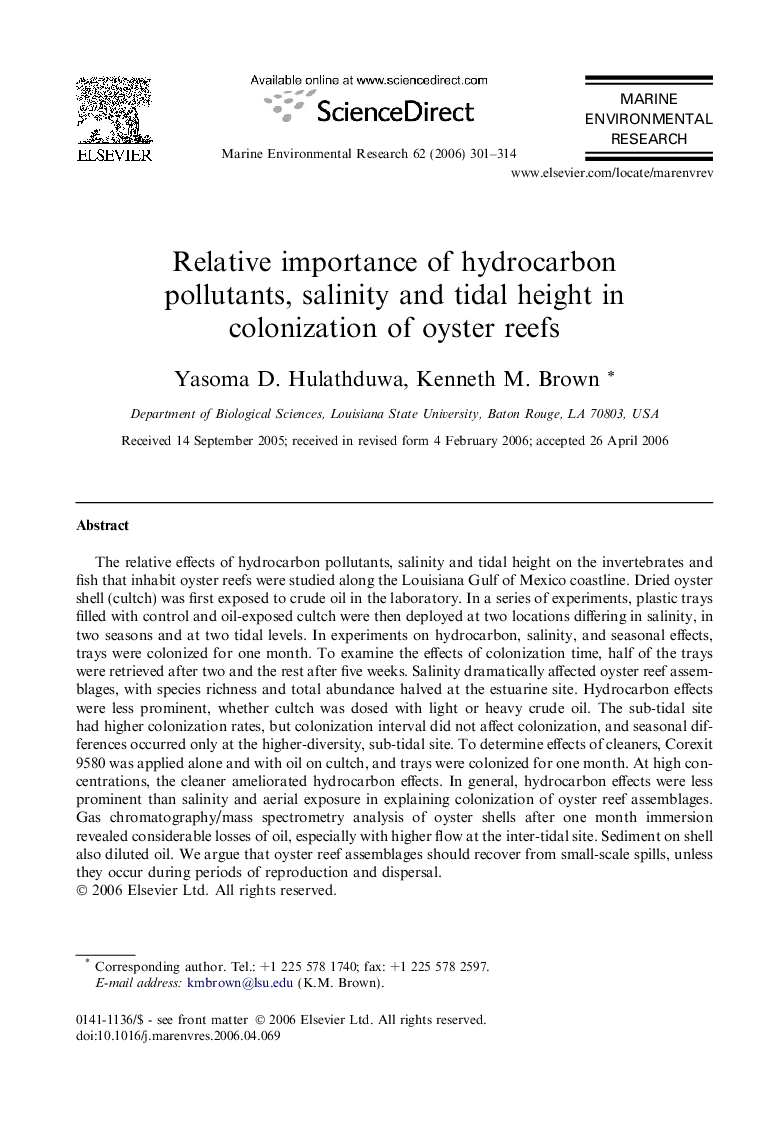| Article ID | Journal | Published Year | Pages | File Type |
|---|---|---|---|---|
| 4551914 | Marine Environmental Research | 2006 | 14 Pages |
The relative effects of hydrocarbon pollutants, salinity and tidal height on the invertebrates and fish that inhabit oyster reefs were studied along the Louisiana Gulf of Mexico coastline. Dried oyster shell (cultch) was first exposed to crude oil in the laboratory. In a series of experiments, plastic trays filled with control and oil-exposed cultch were then deployed at two locations differing in salinity, in two seasons and at two tidal levels. In experiments on hydrocarbon, salinity, and seasonal effects, trays were colonized for one month. To examine the effects of colonization time, half of the trays were retrieved after two and the rest after five weeks. Salinity dramatically affected oyster reef assemblages, with species richness and total abundance halved at the estuarine site. Hydrocarbon effects were less prominent, whether cultch was dosed with light or heavy crude oil. The sub-tidal site had higher colonization rates, but colonization interval did not affect colonization, and seasonal differences occurred only at the higher-diversity, sub-tidal site. To determine effects of cleaners, Corexit 9580 was applied alone and with oil on cultch, and trays were colonized for one month. At high concentrations, the cleaner ameliorated hydrocarbon effects. In general, hydrocarbon effects were less prominent than salinity and aerial exposure in explaining colonization of oyster reef assemblages. Gas chromatography/mass spectrometry analysis of oyster shells after one month immersion revealed considerable losses of oil, especially with higher flow at the inter-tidal site. Sediment on shell also diluted oil. We argue that oyster reef assemblages should recover from small-scale spills, unless they occur during periods of reproduction and dispersal.
